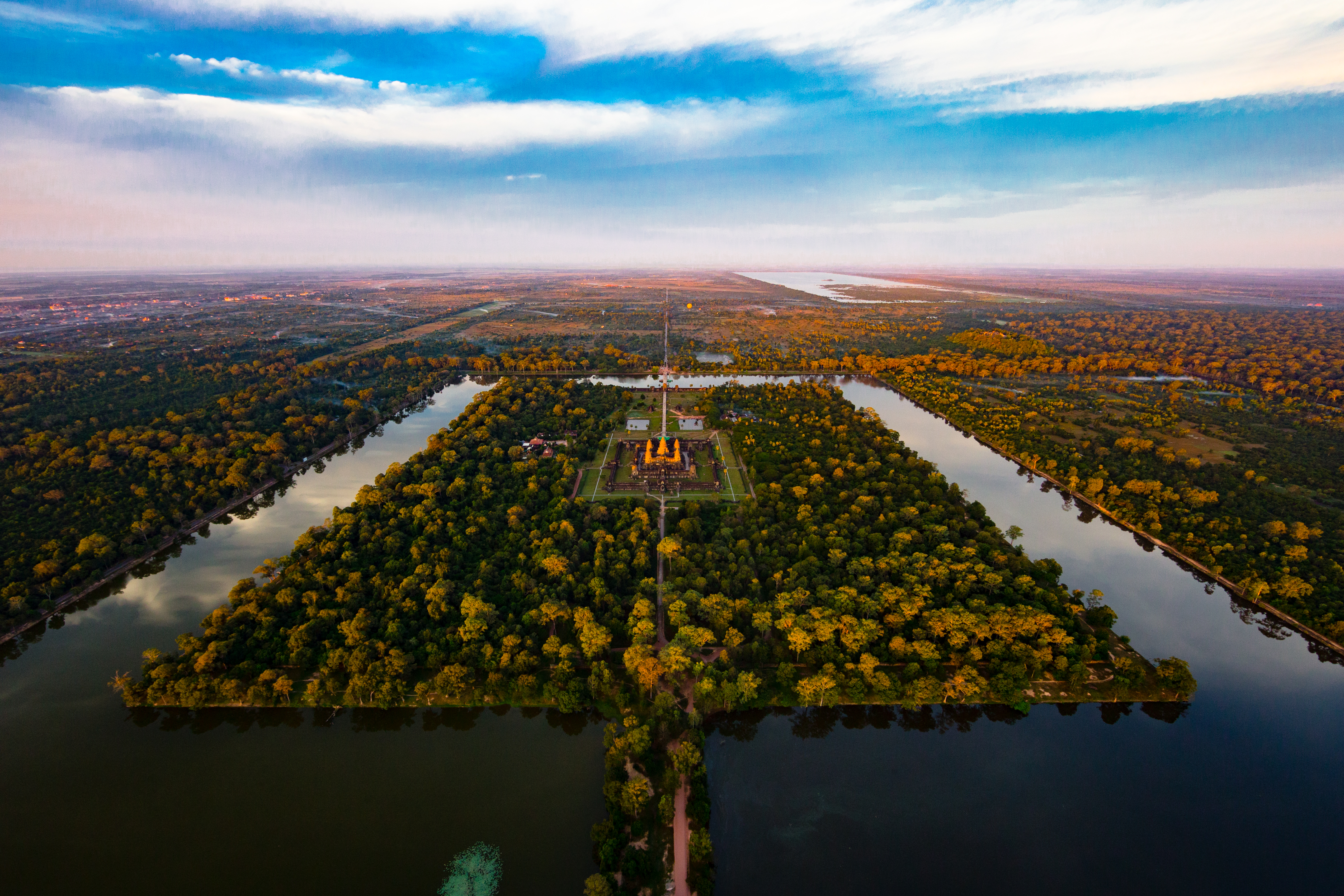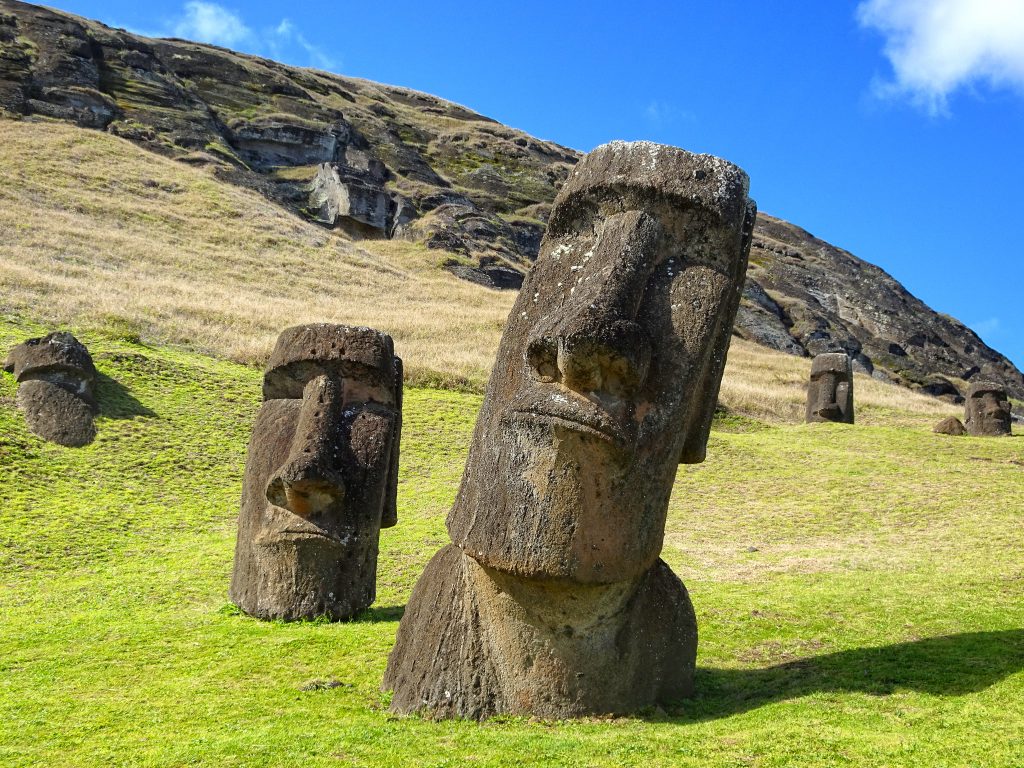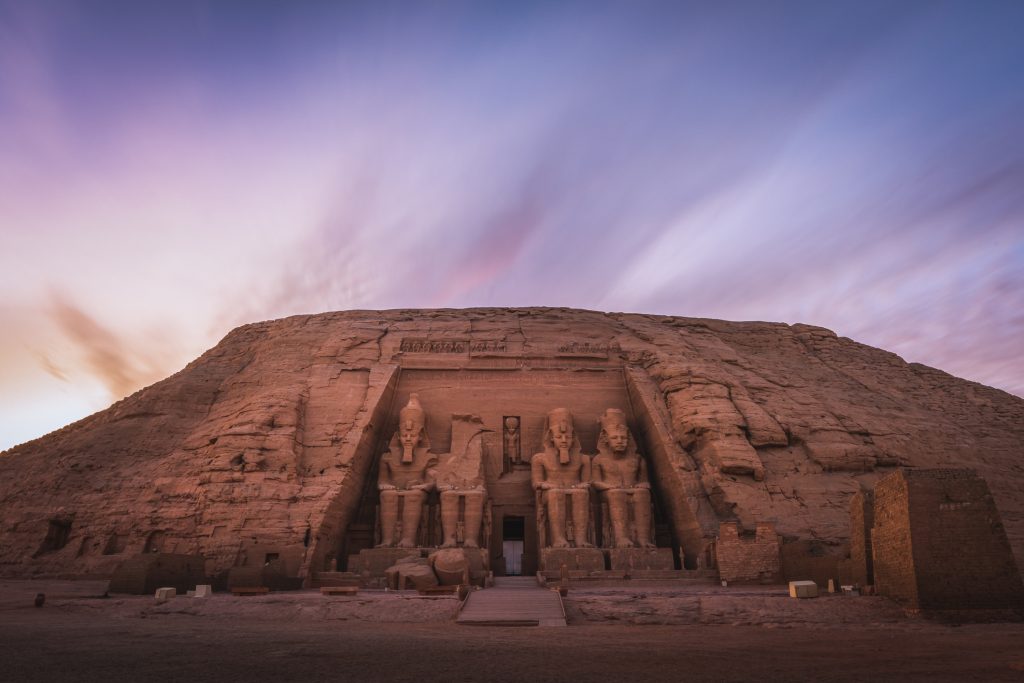Deep into northwest Cambodia is the Angkor Wat Temple. The former capital of the ancient Khmer Empire, it’s a gigantic dedication to the Hindu God Vishnu. Built by the King Suryavarman the Second (Shield of the Sun) of the Khmer Empire 1150 CE, its name is said to mean ‘Capital City of Temples’. Spreading across 400 acres the Angkor Wat Temple complex is one of the largest and most spectacular ancient monuments ever constructed on Earth.
The awe-inspiring and almost unbelievable Angkor temple complex, built in the picturesque and tropical landscapes of Cambodia, is also the largest religious monument found anywhere on Earth.
Although long abandoned as a functioning temple, the UNESCO world heritage site is on bucket lists of travelers from all walks of life and all corners of the globe–making it one of the most popular travel destinations in the world.
What was the Angkor Wat Temple used for? Many things about this ancient site will astonish you.
A look into these questions and more helps reveal a mysterious, awe-inspiring, and magnificent temple that needs to be seen to be believed.
Where is Angkor Wat?

Image: The Angkor Wat Temple complex is located in North West Cambodia, near the Thailand border. Source
How to get to Angkor Wat
- Closest City: Siem Reap
- Travel Time: Travelling to Angkor Wat from Siem Reap takes around 15 minutes.
- When to go: After breakfast and over lunch are quieter periods.
- Angkor Sunset Tip: Busiest times include sunset on top of the hill at Phnom Bakheng. Head for the outer wall of Neak Pean, or the west wall of Angkor Thom for a quieter, unique experience.
- Angkor Temple Complex: There are over a thousand temples in the whole complex, Angkor Wat and Angkor Thom are the most popular, so you can opt to investigate the less traveled (Roluous and Ta Nei are good options) for the less tourist affected option.
What makes up the Angkor Wat Temple Complex?
-
Angkor Wat

Image: Aerial view of the Angkor Wat Temple Source
Angkor Wat is the first temple you’ll find from Siem Reap and forms a symbolic representation of the mythical Hindu home of the gods, Mount Meru. Despite receiving around two million visitors a year, the capital of the Khmer remains relatively intact and provides a ‘popular’ spot at sunset and sunrise with reflective views over the moat always a slightly less touristy highlight.
-
Angkor Thom

Image: Angkor Thom Source
Just over 1.5km north of Angkor Wat, Angkor Thom can be entered via the South Gate which is flanked by 54 devils and gods locked in an eternal tug of war with a huge snake. Inside the high walled citadel, you’ll discover all roads lead to the Bayon with the 350-meter Terrace of Elephants making a definite ‘must see’ while en-route.
-
The Bayon

Image: The smiling faces of the Bayon inside Angkor Thom.
Surrounded by Angkor Thom, the Bayon is a much more intense experience with giant smiling faces watching your every move to unsettle even the least or the most spiritual of visitors. A giant stone Buddha draped in traditional orange robes sits between the Bayon and nearby Baphuon temple providing a pertinent rest stop or photo op.
-
East Mebon

Image: Source
One of the first known temples built in the region, East Mebon is slightly dilapidated however it still holds some of Angkor’s most impressive sculptures with a wealth of wild animals intricately carved in honor of the Hindu god, Shiva. Sunset is the best time to visit as the masonry takes on a brown, red hue with fewer crowds than Angkor Wat.
-
Ta Prohm

Image: The ruins of the Ta Prohm temple is overgrown with towering trees. Source
Aside from the undeniable ingenuity of Khmer architects another side to Angkor is the quicksilver tree roots that slither and drip over crumbling temple walls such as Ta Prohm. Unlike other temples, Ta Prohm has been preserved pretty much as it was found and is a top-rated site, particularly for fans of the 2001 Tomb Raider film.
-
Ta Som

Image: The entrance of the temple of Ta Som
Ta Som is a kind of mini version of Ta Prohm with a well-photographed strangler fig which has allowed its roots to grow and occupy the intriguing entrance way. Approach from the east, and you’ll find a solitary shrine carved with female deities and if you’re searching for silence.
History of the Angkor Wat Temple
The Angkor Wat Temple is a masterpiece of human construction. Its precision, composition, building techniques, balance, as well as artistic sculpture and relief, is unbelievable.
It is a vast temple complex that has a footprint of over 400 acres, and its highest tower stands 213 feet tall.
The temple is surrounded by a moat–over 650 feet wide. If it were to be stretched out it would measure an incredible 3.4 miles long. The moat is as functional as it is breathtaking, helping to stabilize the temple and its foundations as well as maintaining the surrounding water levels.
Angkor Wat is orientated to the west, which is the symbolic direction of the Hindu god Vishnu. A long stone causeway spans the moat and is used as the main entrance to the temple.
Not only is it an incredible display of architecture and engineering it is also aesthetically stunning. As you approach the temple, you are met with stone towers that draw your attention and invite you to gaze upon its grandeur. The towers, five in total, are made with such precision that they can be used to track the suns movements throughout the year.
What was Angkor Wat Built for?
Although the reason why this famous monument was built is debated, there are some things that are agreed upon. The word Angkor roughly translates to ‘capital city’ and Wat to ‘Temple’; Angkor Wat means ‘Capital City Temple’
The temple is an earthly reflection of the infinite universe. It is a replica, set in stone, to help reveal to its onlookers our place within the cosmos.
Angkor Wat is thought to represent Mt Meru, which, according to the Hindu faith, is the home of the gods. The five main towers of Angkor Wat are said to represent Meru, while the surrounding land and moat symbolize the continents and mountains and sea surrounding them.
It was initially built as the capital of the Khmer empire, which ruled over Cambodia for over 600 years from around 800 BC to 1400 BC. The significance and beauty of the site was in dedication to the god Vishnu, who is depicted through carvings and artworks found all over the site.
When was Angkor Wat Built?
The only remains left to us by the once great Khmer empire are scatterings of ancient monuments. Although the capital of the Khmer was in Cambodia, the Empire also stretched into areas of Laos, Vietnam, as well as Thailand.
Because of this, Angkor Wat is thought to have been the main temple to a population of well over one million.
Construction of Angkor Wat began in the middle of the 12th century AD. Although it is not known for sure, by most estimations it took around 30 years to complete. It was during the reign of King Suryavarman II that the first evidence of designs and construction appear in the archaeological record.
It was a combination of highly skilled architects, designers, stonemasons, engineers, and artists that would have all contributed to creating the exquisite site.
How was Angkor Wat Built?
Even by today’s standards, it would take years and countless millions of dollars to construct a simple
Built before the days of heavy machinery, the builders of Angkor would have instead relied on large numbers of people and brute workforce. More than 300,000 people are believed to have built the temple, as well as over five thousand elephants–with thousands of each working together at once.
To give some perspective on the scale of the work– over 53 million cubic feet of Earth, sand, and silt was removed from the site, and that was just for the moat!
The sandstone blocks used throughout Angkor Wat were brought from their quarry over 30 miles away. According to inscriptions and legends, these were dragged, floated, and hauled into place in callous and almost impossible conditions.
Hindu or Buddhist Carvings at Angkor Wat?
It is not only Angkor Wat from a distance that evokes the senses. The fine details found all over the temple are as powerful and evocative as the structure itself.
One area that presents a mystery is the mix of both Hindu and Buddist Carvings across the Angkor Wat Temple.
Covering nearly the entire temple can be found carvings and inscriptions of the highest quality. Depictions of both Hindu and Buddhist mythology as well as animal and human sculptures are met with stunning floral artworks to create a symphony of art.
The heavy symbolism found across Angkor Wat is still shrouded in mystery, with specific numbers of carvings and sculptures popping up again and again. Some argue they are processional numbers, while others say they are geometric numbers (most notably pentagonal numbers relating to the five central towers of Angkor Wat).
Here’s a look of some of the incredible art of Angkor Wat:
-
Apsaras

Image: Carved images of Angkor Wat
There are thousands of unique and individual carvings of ‘Apsaras,’ found all over Angkor Wat. These are dancing goddesses who represent the guardians of the temple as well as symbolize the elixir of immortality in which they were born. They are also referred to as ‘nymphs’.
Each Apsara is beautiful in its detail. Adorned with jewelry, floral decorations, clothing, specific postures, as well as countless unique hairstyles, they draw you in with their mystery and splendor.
-
Churning of the Milky Ocean

One of the most important artworks found within the walls of the temple is known as the ‘churning of the milky ocean.’ It represents the story of the creation of the universe and the beginning of time.
-
Naga Serpent

Image: The Naga serpent of Angkor Wat. Source
A huge seven-headed serpent greets you as you first enter the site of Angkor Wat. According to mythology, the Khmer people who built the temple were from another realm, and the Naga Serpent is thought to honor a reptilian-like race and pay tribute to their deeds.
This mythical carving is also representative of the infinite and immortal universe, with the number 7 a highly symbolic number not only according to the Khmer but also by most of the ancient world.
Conclusion
Angkor Wat continues to attract and enthrall millions of visitors each year. Although long abandoned, its enormous scale mixed with incredible detail is still picturesque and astonishing.
We still gaze curiously upon the temple, with many mysteries and unanswered questions surrounding the famous monument that would have been glorious in its original form.
If you’re traveling through Cambodia, you the trip to the Angkor Wat Temple complex is by far worth the journey.
Now it’s up to you. Have you visited the site? What do you make of its remarkable construction and size?


 The Angkor Wat Temple in Cambodia boasts some of the spectacular architecture of the ancient world.
The Angkor Wat Temple in Cambodia boasts some of the spectacular architecture of the ancient world.
























